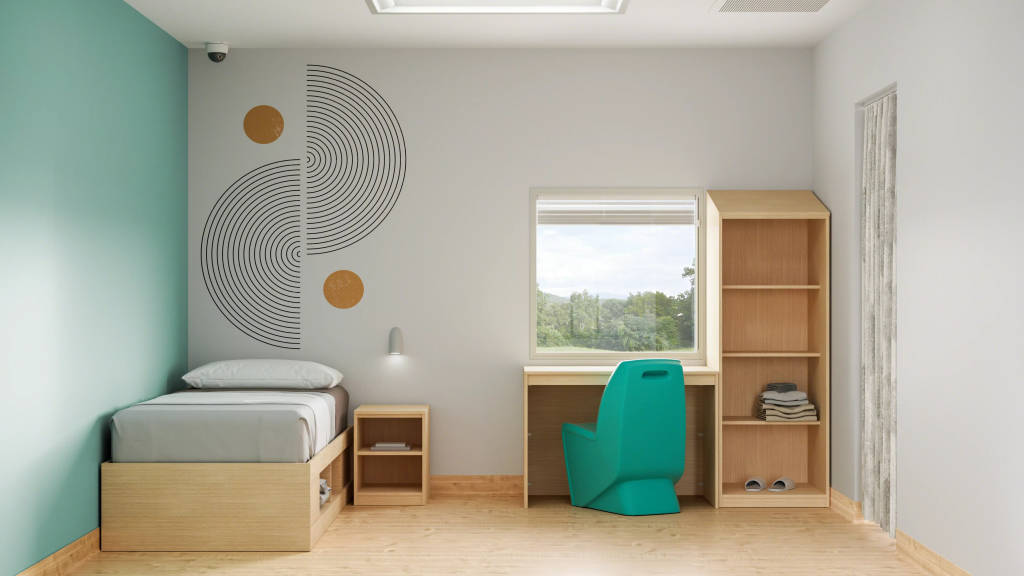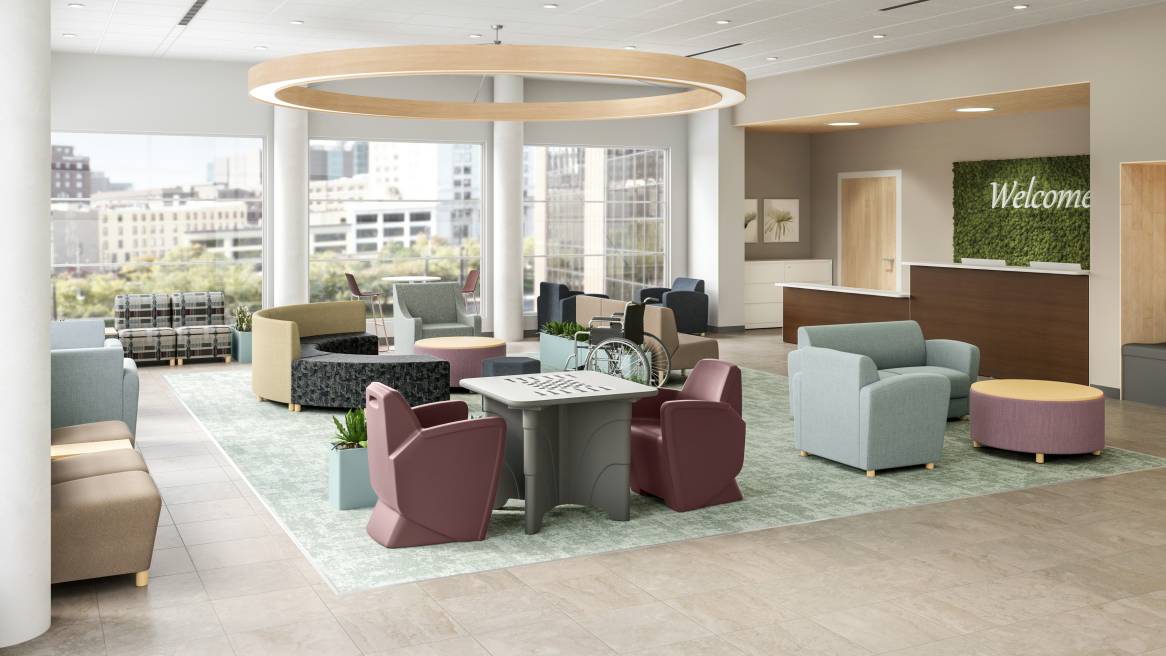Designing Safe & Welcoming Behavioral Health Spaces
7 design principles for creating a better patient experience
Anxiety, depression, bipolar disorder, substance abuse, eating disorders, autism, post-traumatic stress disorder — the number of people seeking treatment for conditions such as these has steadily risen over the past decade, and the pandemic has significantly exacerbated this trend.
Behavioral health conditions affect at least 20% of adults in the United States, and they’re even more common among patients receiving care for medical conditions. What’s more, the crisis is getting younger, with a significant spike in mental health emergency department visits for children 5 to 11, according to a recent Centers for Disease Control and Prevention report.

More than ever, it’s essential that behavioral health spaces are insightfully and purposefully designed to be both safe and welcoming — a uniquely demanding challenge, says Seth Starner, Steelcase Health Advanced Explorations leader.
To help healthcare organizations and designers meet this challenge, Steelcase Health recently undertook a research project focused on gaining insights into the macro issues and patient needs that must be addressed.
“Behavioral health patients are seeking care at a very vulnerable time in their lives, and our research confirmed that there’s a powerful link between emotions, mental states, behaviors and the built environment,” says Starner. “Thoughtful and well-informed design can have a profound impact on patient experiences and outcomes.”
Complex Needs & Requirements
While certain behavioral health services such as professional counseling have successfully gone virtual in recent years, it’s now widely believed that people with acute conditions are better served by inpatient facilities. In hospitals, new types of units are needed to meet the rising demand for behavioral health care, including inside the emergency department. And there’s now a growing trend toward caring for behavioral health patients in residential facilities.
Wherever behavioral health care is administered, the physical safety of patients and staff is a top priority. This requires an extra layer of consideration when it comes to space design and furniture selection — for instance, choosing furniture that can’t be easily torn apart or weaponized.
“Of course, safety is important in any healthcare setting, but designing for behavioral health requires a totally different mode of thinking,” Starner emphasizes. Different types of spaces require different levels of safety. Admission rooms, exam rooms and seclusion rooms require special consideration because they’re where staff interacts with newly admitted patients who present unknown risks or may be agitated.
However, behavioral health spaces involve much more than physical safety and accessibility compliance with the America Disabilities Act. “Our research has found that physically safe environments that don’t consider emotional harm aren’t effective spaces,” says Starner. “Patients should both be safe and feel safe.”
Therapeutic design — the process of designing environments that promote psychological wellness through light, color and other sensory elements — supports physical safety by creating less stressful spaces and lowering feelings of aggression and violence.
Learn more about our new relationship with ModuForm, a behavioral health specialist whose solutions help to humanize experiences through compassion and vigilance for patient and clinician safety.
“Aesthetics and comfort can be achieved while still creating safe environments,” says Starner. “Behavioral health furniture doesn’t need to look unapproachable and uncomfortable. The goal is to create spaces that will help patients relax and be open to receiving treatment. A welcoming environment signals to patients that their care matters and it can help minimize any stigma about their condition by conveying a sense of respect and dignity.”
Moreover, designs that improve the psychological wellbeing of patients can also benefit staff and visitors. Noise control, for instance, can reduce stress for everyone in the building.
Seven Design Principles
To help organizations and designers create safe and welcoming behavioral health spaces, Steelcase Health synthesized their research into seven design principles that together form a multilayered strategy.

1. Design for physical safety
- Identify the risk levels for each type of space and make appropriate design choices
- Incorporate clear sightlines between patients and staff
- Select appropriate furnishings that may prevent self-harm
- Consider weight, cleanability and tamper- and puncture-resistant features
2. Balance needs for privacy, social interaction and safety
- Design spaces with privacy that also safeguard against self-harm
- Support the therapy of social interaction while balancing safety and needs for personal spaces in group settings
3. Design a welcoming environment that supports psychological safety
- Incorporate natural elements and biophilic materials and artwork that mimic or evoke the calming effects of nature
- Normalize the treatment experience to help restore patient dignity and self-respect

4. Offer choice and control where possible
- Incorporate options for where to sit and in what posture (e.g., upright, lounge, etc.)
- Allow patients safe control over their environment (e.g., personal selections for lighting and sound)
- Implement sensory rooms and de-escalation rooms – i.e., “safe spaces” to decompress and work out anxieties
5. Support positive distractions
- Embed movement into furniture (e.g., gliders, rockers, etc.)
- Provide patients with spaces to store personal items
- Incorporate soothing, tamper-resistant artwork
- Locate settings near natural light as much as possible
- Provide access to nature as appropriate (e.g., courtyards)
6. Remember: One size does not fit all
- Intentionally design for flexibility with versatile tables and modifiable furniture, or even whole rooms that can be converted to different uses
- Leveraging a universal design approach, include products that support a wide range of ages, sizes, abilities, mobilities and diagnoses
7. Support therapeutic interactions
- Create spaces that help patients and caregivers relate to each other
- Help clinicians convey respect, support and empathy
- Ensure visitors feel welcome in a safe environment
Find Solutions + Inspiration
New to our community of brands, ModuForm solutions help to humanize behavioral health experiences through compassion and vigilance for patient and clinician safety. Learn more about our new relationship with ModuForm. ModuForm’s market-proven products are now available to you through Steelcase, expanding the range of insight-driven solutions in our consolidated portfolio.
Here to Help
Connect with one of our healthcare experts to learn more about our insights and solutions for behavioral health environments.


